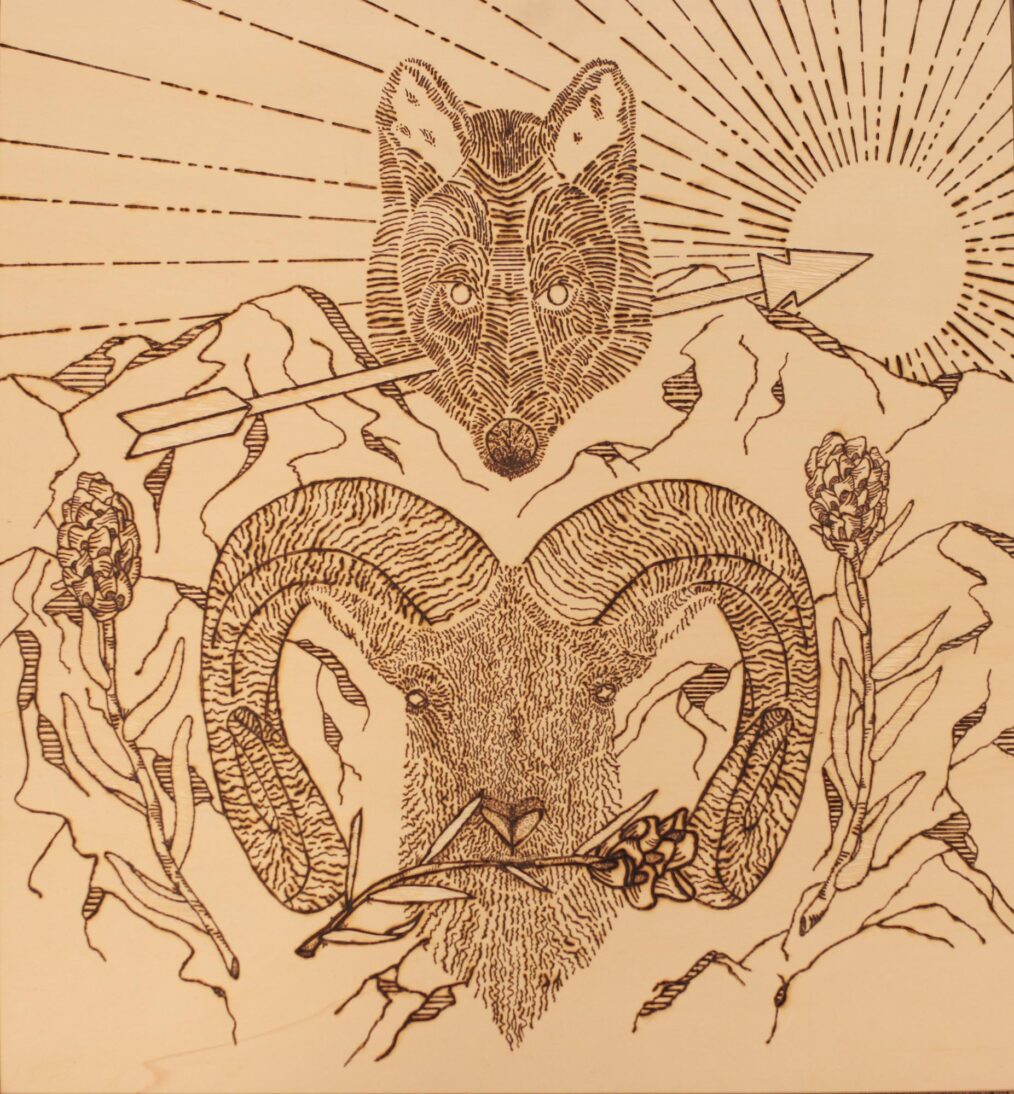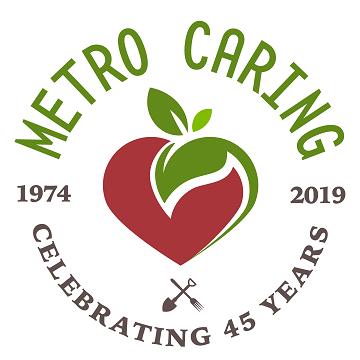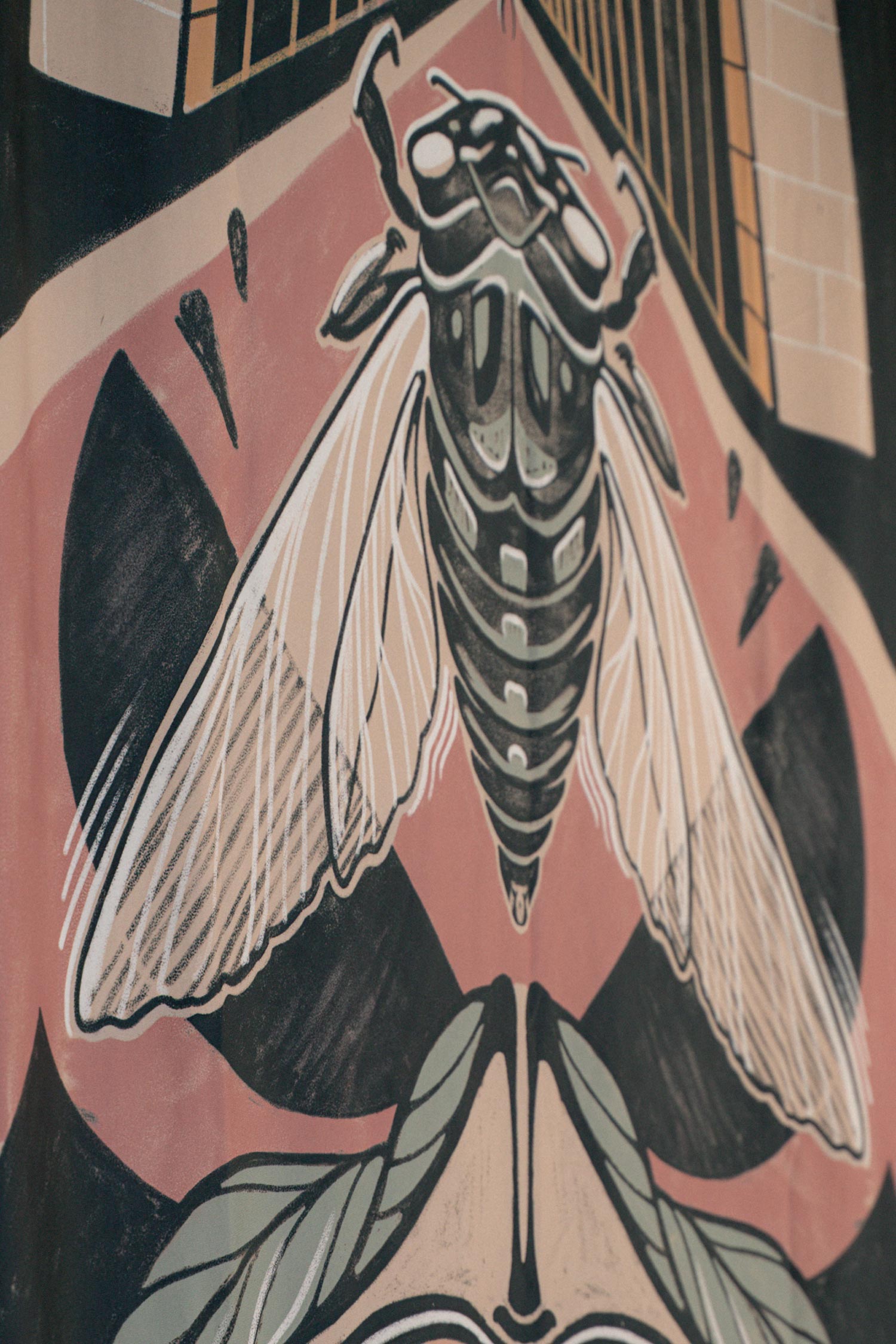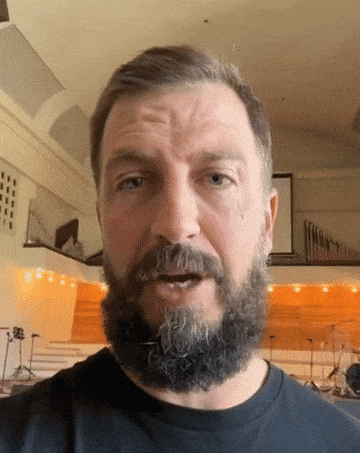
Psalm 79—Artwork
Learn more about Christ in the Psalms artwork and download artwork guides here.
Person: William Emerson
My name is William Emerson, I grew up in Colorado with a desire to explore and uncover truths about myself and God through His creation. Like many, nature has captivated me and God has used it to reflect to me deep truths about life in Him. I found the narrative of this psalm in the workings of animals in the wilderness.
Piece
Wood carving and burning.
PROCESS
In Psalm 79, Israel (The Sheep) cries out to God for salvation after Babylon (The Wolf) has conquered Jerusalem. The chosen people of God find themselves cornered and desperate for rescue from this threat. They are begging for God to remove the immediate threat in their life and it is not until near the end of the Psalm that they ask for forgiveness and humble themselves as sheep in need of a shepherd. They are so focused on a very real threat that they first enter their prayer mad at God and mourning, asking how long He will let this go on, as if to say that if He has issue with his people, He needs to let it go because they have bigger problems than a broken relationship with their God. After their expression of sorrow and plea, they recognize that a breaking has taken place between God and His chosen people.
The broken reality of sin (the toxic locoweed in the sheep’s mouth) is a deeper internal issue that goes beyond even the most pressing of present circumstance. God does eventually retrieve Israel from Babylon (the arrow through the wolf) but the herd has a deeper issue they have inflicted on themselves that only the shepherd can undo.
While creating this piece, I wanted to tell two stories of salvation: God does offer rescue from immediate and painful trials at times, but it often is not in the timing and way that we hope for and we still have our own sin to bring to Him regardless of the outcome of the immediate hurt. The narrative of a sheep hunted by a wolf captured the immediate threats we feel and the self inflicted poisoning of the sheep felt an accurate narrative to our own sin.
Burning and carving this scene required hundreds of repetitive motions and in the repetition I find there is a meditative worship that takes place, inviting the Spirit to engrain the narrative of this Psalm in me as I work through creating the scene.



